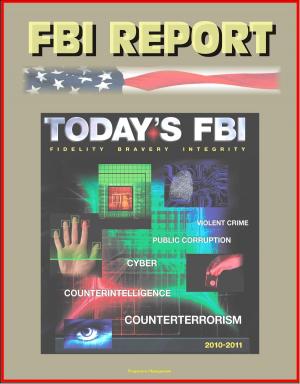Nunn: Lugar Cooperative Threat Reduction Program: Origins of Nuclear Weapons Control Initiative, Soviet Union, Beyond Nunn - Lugar: Curbing Next Wave of Weapons Proliferation Threats From Russia
Nonfiction, History, Military, Nuclear Warfare, United States| Author: | Progressive Management | ISBN: | 9781311045430 |
| Publisher: | Progressive Management | Publication: | February 26, 2016 |
| Imprint: | Smashwords Edition | Language: | English |
| Author: | Progressive Management |
| ISBN: | 9781311045430 |
| Publisher: | Progressive Management |
| Publication: | February 26, 2016 |
| Imprint: | Smashwords Edition |
| Language: | English |
Professionally converted for accurate flowing-text e-book format reproduction, this compilation reproduces two fascinating works about the history and future of the nuclear threat reduction program initiated by Senators Sam Nunn (D-GA) and Richard Lugar (R-IN). The first document, The Origins of Nunn-Lugar and Cooperative Threat Reduction, a Case Study, reveals new details about the program. How did Nunn-Lugar come to be? Who were the key leaders, facilitators, and practitioners who recognized the need and opportunity—at a pivotal moment in history—to pioneer a program of cooperative security between two former adversaries? What key insights and lessons can be drawn from the origins of Nunn-Lugar? To answer these questions, this case study recounts initial attempts to aid the former Soviet Union, describes the events leading to the passage of the Nunn-Lugar legislation, and reviews early efforts by the Senators to facilitate implementation of the program. Anticipating the possibility of loosely controlled nuclear weapons inside the former Soviet Union, key leaders in Congress and experts in the policy and academic communities began to assess the nature of this threat and to consider approaches to reducing the danger it posed to U.S. and global security. Out of these investigations emerged the initial Nunn-Lugar legislation and the broader Cooperative Threat Reduction program—an unprecedented effort to reduce nuclear dangers by securing or eliminating Russian weapons systems and related materials and capabilities using aid from the U.S. Government.
The second volume, Beyond Nunn - Lugar: Curbing The Next Wave of Weapons Proliferation Threats From Russia, is the result of a year-long study of the future of U.S.-Russian nonproliferation cooperation. With so many analyses already available of U.S.-Russian cooperative threat reduction efforts, it is not obvious why one should bother with yet another. There are, however, three good reasons for doing so. First, with the recent warming in U.S.-Russian relations, it makes sense to review what is clearly the current mainstay of existing U.S.-Russian cooperation—the one billion dollars per year worth of government-funded Nunn-Lugar programs—to see what can be done better. Certainly, if the Cooperative Threat Reduction Program's worthy objectives can be better achieved, this, in turn, should enhance the prospects for increased U.S.-Russian security cooperation generally. Of course, the reverse is also true. Second, although there is broad support to continue these programs, there is a growing divide between the programs' backers and their critics as how best to proceed. Among the programs' supporters, the key recommendation is to spend substantially more on existing projects. Critics of the programs' defense conversion efforts, however, insist that these projects be made self-sustaining as soon as possible. Finally, since September 11, 2001, the inventory of threats that the United States and Russia need to cooperate on reducing has clearly grown.
Professionally converted for accurate flowing-text e-book format reproduction, this compilation reproduces two fascinating works about the history and future of the nuclear threat reduction program initiated by Senators Sam Nunn (D-GA) and Richard Lugar (R-IN). The first document, The Origins of Nunn-Lugar and Cooperative Threat Reduction, a Case Study, reveals new details about the program. How did Nunn-Lugar come to be? Who were the key leaders, facilitators, and practitioners who recognized the need and opportunity—at a pivotal moment in history—to pioneer a program of cooperative security between two former adversaries? What key insights and lessons can be drawn from the origins of Nunn-Lugar? To answer these questions, this case study recounts initial attempts to aid the former Soviet Union, describes the events leading to the passage of the Nunn-Lugar legislation, and reviews early efforts by the Senators to facilitate implementation of the program. Anticipating the possibility of loosely controlled nuclear weapons inside the former Soviet Union, key leaders in Congress and experts in the policy and academic communities began to assess the nature of this threat and to consider approaches to reducing the danger it posed to U.S. and global security. Out of these investigations emerged the initial Nunn-Lugar legislation and the broader Cooperative Threat Reduction program—an unprecedented effort to reduce nuclear dangers by securing or eliminating Russian weapons systems and related materials and capabilities using aid from the U.S. Government.
The second volume, Beyond Nunn - Lugar: Curbing The Next Wave of Weapons Proliferation Threats From Russia, is the result of a year-long study of the future of U.S.-Russian nonproliferation cooperation. With so many analyses already available of U.S.-Russian cooperative threat reduction efforts, it is not obvious why one should bother with yet another. There are, however, three good reasons for doing so. First, with the recent warming in U.S.-Russian relations, it makes sense to review what is clearly the current mainstay of existing U.S.-Russian cooperation—the one billion dollars per year worth of government-funded Nunn-Lugar programs—to see what can be done better. Certainly, if the Cooperative Threat Reduction Program's worthy objectives can be better achieved, this, in turn, should enhance the prospects for increased U.S.-Russian security cooperation generally. Of course, the reverse is also true. Second, although there is broad support to continue these programs, there is a growing divide between the programs' backers and their critics as how best to proceed. Among the programs' supporters, the key recommendation is to spend substantially more on existing projects. Critics of the programs' defense conversion efforts, however, insist that these projects be made self-sustaining as soon as possible. Finally, since September 11, 2001, the inventory of threats that the United States and Russia need to cooperate on reducing has clearly grown.















